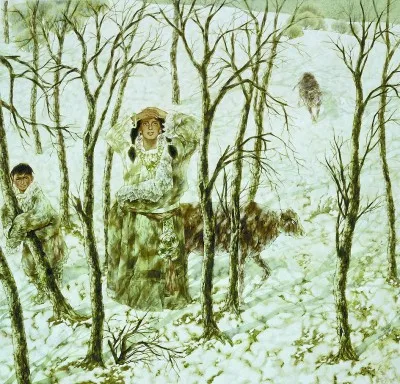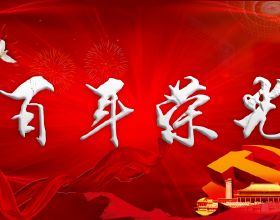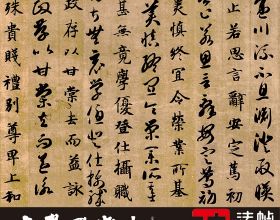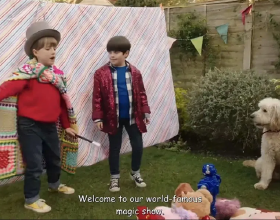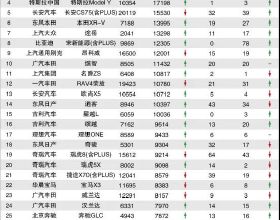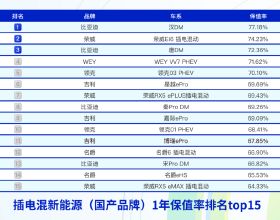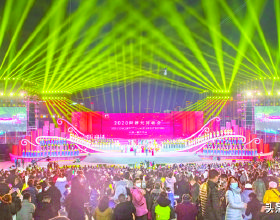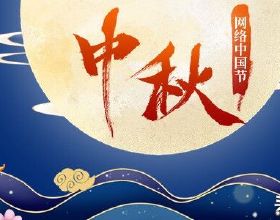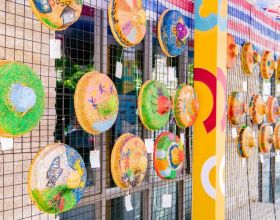北風吹雪散瓊英,疑是雲孫巧剪成。
平地鋪來偏潔白,漫天飛處總輕明。
銀河傾瀉呈祥瑞,玉燭調和兆太平。
來歲改元新治化,萬邦無事樂春耕。
大雪紛飛落古今
伴隨著氣溫的持續走低,
我們迎來了大雪節氣。
明人王象晉在《群芳譜》中解釋:
“大雪,十一月節,
言積寒凜冽,雪至此而大也”。
有趣的是,
我國幅員遼闊,地理環境複雜,
大雪節氣期間,各地通常出現不同的天氣景觀,
如湘鄂等地的凍雨;西北、東北地區的霧凇;
江南地區的晨霧;
當然免不了還有大範圍的暴雪。
民間俗語中有“小雪醃菜,大雪醃肉”的說法。
大雪節氣一到,
處於農閒時節的各家各戶
便開始忙著醃製過冬的美味,
預備著進補。
四時的變幻與文學藝術創作往往相融。
南唐畫家徐熙的《雪竹圖》,
描繪了荒寒中傲然挺立的一叢雪竹,
畫中積雪不施白粉,
純用墨色留白渲染而成,尤為珍貴。
畫家使用不同層次的淡墨烘托出不同物體上的雪,
留白的雪便也有了變化的律動之美。
不畏雪寒的不僅有竹子,還有孩子們。
戴樹良的作品《大雪》,
就描繪了兒童在雪天堆雪人、打雪仗的歡快情景。
正如畫面中寫的:
“大雪天更寒,屋外賞雪真好玩”。
冬日裡的陽光(中國畫) 傅仲超
大雪的寒冷,更是凸顯了陽光的珍貴,
在傅仲超的《冬日裡的陽光》中,
融融的日光不僅溫暖著畫中雪白的大地,
也透過畫面,觸動著我們的心靈。
在現存的古代雪景圖畫中,
廣為人知的還有宋徽宗趙佶名下的《雪江歸棹圖》。
一位漁者獨自駕著扁舟,面朝著蒼莽的雪山。
整幅畫的筆觸極為細秀,
描繪的北方江岸雪景開闊疏朗,氣韻雅潤而蒼古。
今人鍾蜀珩的《城市的雪》,
作品以大面積的白和灰以及暗色調,
營造出一種不斷向畫面外延伸的空曠美感,
讓人感受到了茫茫雪意。
宋徽宗的《雪江歸棹圖》區域性
藝術家的創作,往往發乎性靈,
他們用身體感知大雪節氣帶來的嚴寒與雨雪,
我們在感嘆自然節律的奧妙時,
也更多了一份與古人同賞、今人同慶的快樂。
(作者:萬伊,原文刊載於《光明日報》2020年12月06日10版)
Daxue (Major Snow),
An Everlasting Inspiration to Chinese Artists
In early December comes the solar term Daxue (Major Snow), which heralds more freezing weather. As described in a 400-year-old Chinese farming book with literary quotations, Daxue is characterised by increasingly frigid air, bitterly cold wind and the arrival of heavy snow.
Interestingly, in China which covers a vast area with various geographical features, different regions display varied natural phenomena and sceneries during Daxue, including the freezing rain in Central China, the rime ice in Northern China, the morning mist in Eastern China, as well as the inevitable large-scale snowfalls.
攝影|JOY
As the saying goes, “Veg pickled in Xiaoxue (Minor Snow); meat preserved in Daxue (Major Snow)”. During the solar term Daxue when there’s no farming activities, people tend to get busy making various “cured” foods, to “cure” the winter blues.
The flowing seasons are usually captured in artistic creations. The 1000-year-old painting attributed to Xu Xi, depicts a cluster of bamboo standing upright in the cold winter snow. The snow was not painted with white powder, but rendered by deliberate blank, which is quite extraordinary. Light ink, in different concentrations, was used to bring out the snow on different objects, together with which the empty space of snow creates rhythm and consonance.
攝影|呂文捷
In the snow, there are not only the upright bamboos, but also the playful children. In the painting by Dai Shuliang, children are happily building snowmen and having a snowball fight. Just as what’s written in the painting,
“During Daxue gusts of cold wind blow; but it’s so fun to play with the snow.”
The freezing snow also accentuates the precious winter sunshine. In Fu Zhongchao's painting, the slow molten sunlight not only heats the snow-laden earth in the painting, but also suffuses us with a warming glow and inspiration.
Among the ancient paintings that capture snowy scenes, a renowned one was created by Emperor Huizong of the Song Dynasty (960-1279), who was a famous painter and calligrapher. A fisherman is boating along the river surrounded by mountains after snow. With thin and powerful lines and fluent brushwork, the painting creates a dignified image, revealing the sophistication and charm of court painting in the early 12th century.
攝影|呂文捷
Also capturing a snowy scene, the contemporary painting by Zhong Shuheng depicts a snow-covered modern city. With large areas of white, grey and dark hues, the work creates a sense of beauty in the emptiness that extends out of the frame.
Chinese artists have always been inspired by the freezing cold and snow brought by the solar term Daxue (Major Snow), creating many works about the rhythmic cycle of the flowing seasons. Such artworks have been celebrated by both our ancestors and contemporaries, transcending time and space.
文字素材來源:《光明日報》2020年12月06日 10版
出品:光明日報&中國傳媒大學
責編:王遠方
編輯:孫岱 張雪瑜

